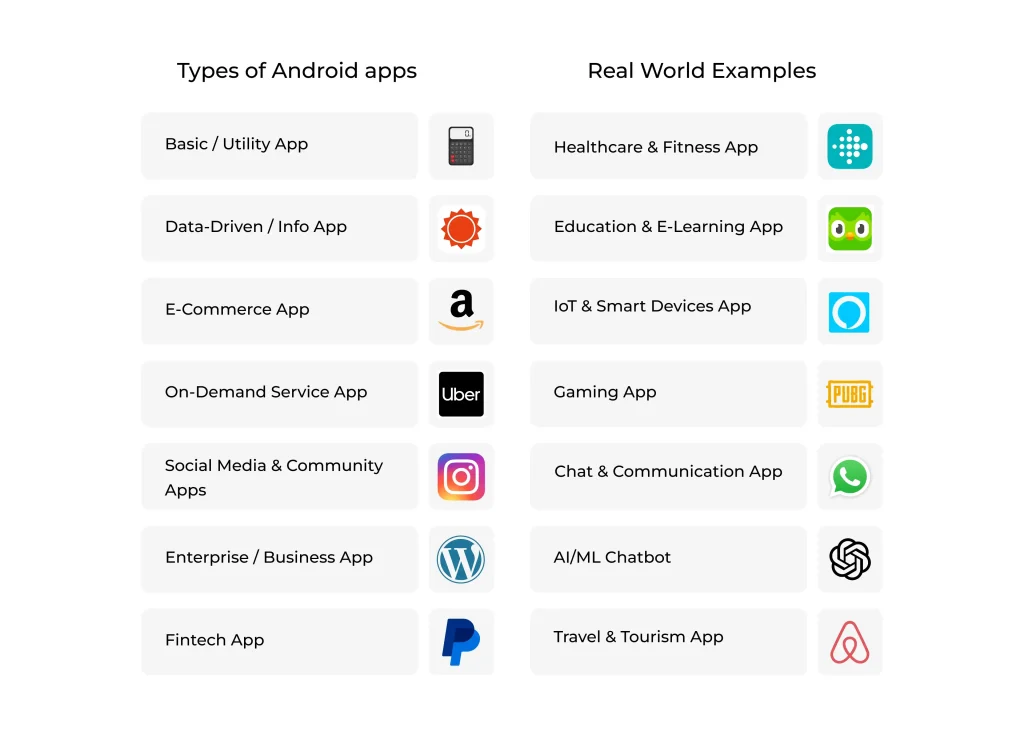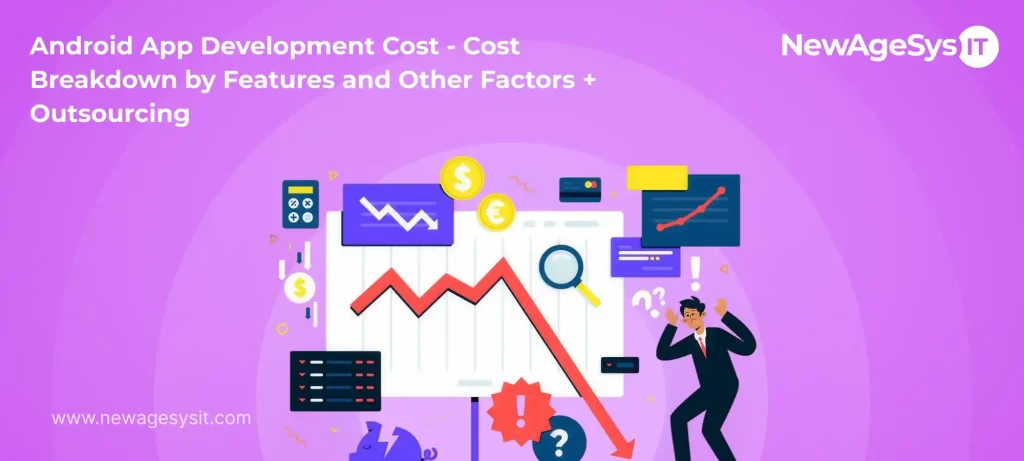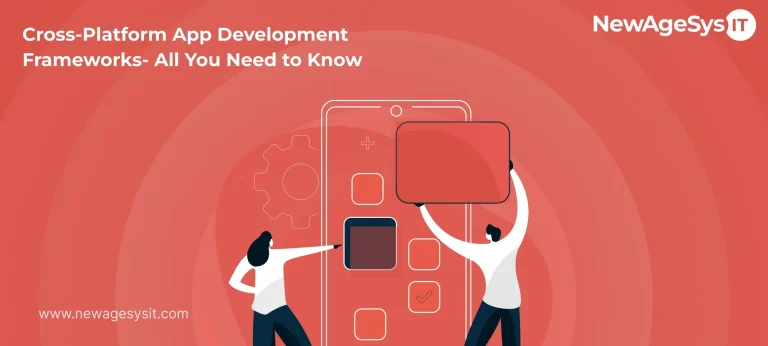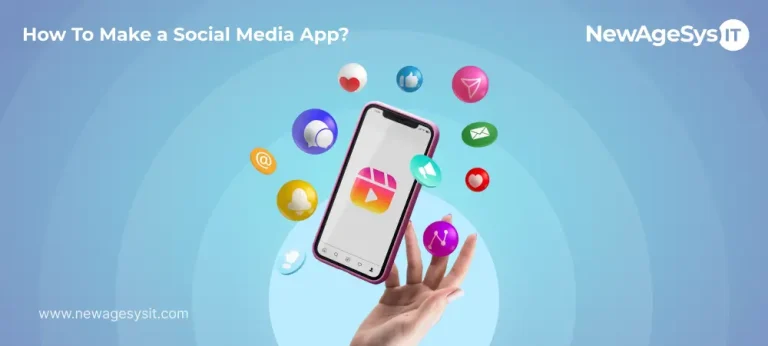| Key Takeaways: Typically, if we exclude factors like complexity, features, and development regions, then the Android app development cost would range between $8,000 to $300,000+. Features like AI/ML, real-time chat, GPS, payments, etc., can significantly add to the overall development cost. Outsourcing to experienced agencies can actually reduce cost by 50-60%, as compared to in-house in the U.S. MVP development is the most cost-efficient way to validate your idea in the market and get real feedbacks. Post-launch expenses like maintenance, security, upgrades, and feature enhancement can add up to 15-20% yearly to the total cost. |
At this stage, there isn’t even a real point in discussing the market captured by Android applications. With over 3 billion devices that are simply Android globally + 72.46% of smartphones being Android in the world, it is almost collateral for you to develop an Android app to give it a winning chance.
Since the topic for this article is “Android App Development Cost,” we already believe that you understand the Android app development process to some degree. And, your quest is about the next obvious question, i.e., “How much does it cost to create an app for Android?”
We will give the answer right away. Based on the complexity and tons of other factors, the cost to develop an Android app in the U.S. would be around $40,000 – $300,000+. Additionally, the same application can be developed at a price range of $8,000 – $80,000+ in a country like India.
Yes, the disparity of the prices is very much clear, and there are other nuances as well that need to be covered to fully understand Android app cost.
So, if you want to dive deeper and get a substantial answer to “How much does it cost for app development for Android?,” we suggest you read the article ahead. We ourselves are an outsourcing company based in the U.S., and have worked on 1000+ projects overall, with a decent chunk of Android app development endeavors in our portfolio.
Note: The prices discussed below are based on the U.S. region. And, generically represents that cost incurred for different practices and factors that involve Android app development.
Types of Android Apps – Deliverables for the Market
If you are someone who already has an idea in his/her head, the section is not for you. You should actually focus on validating the penetration of your idea in the market. However, if you are a serial entrepreneur searching for your next idea, learning about the different types of Android apps can help you understand the types of services you can offer in the current market.
Here is a table that covers all the important types, with primary purpose and real-world examples for you to examine.

| App Type | Primary Purpose / What They Do | Examples |
|---|---|---|
| Basic / Utility Apps | Simple, single-purpose functions | Calculator, Notes, Flashlight |
| Data-Driven / Info Apps | Display or fetch content from a backend or API | News apps, Weather apps, Blogs |
| E-commerce Apps | Browsing, cart, checkout, and payments | Amazon, Walmart |
| On-Demand Service Apps | Connect users with service providers in real time | Uber, DoorDash |
| Social Media & Community Apps | Content sharing, interaction, networking | Instagram, Reddit |
| Enterprise / Business Apps | Internal workflows, automation, productivity | CRM tools, HR apps |
| Fintech Apps | Payments, wallets, investments, and financial tracking | PayPal, Cash App |
| Healthcare & Fitness Apps | Telemedicine, health tracking, wearable sync | Practo, Fitbit |
| Education & E-Learning Apps | Online learning, LMS, course delivery | Duolingo, Udemy |
| IoT & Smart Device Apps | Control and sync connected hardware/devices | Smart home apps, Wear OS apps |
| Gaming Apps | Entertainment via casual or advanced games | Candy Crush, PUBG |
| Chat & Communication Apps | Messaging, calls, and team collaboration | WhatsApp, Slack |
| AI/ML-Powered Apps | Personalization, recommendations, automation | AI filters, chatbots, scanners |
| Travel & Tourism Apps | Bookings, maps, itineraries, trip planning | Airbnb, MakeMyTrip |
Android App Development Cost Breakdown by App Type & Complexity
Different app types require a combination of different features clubbed together, in order to create something useful for the end customer. Additionally, the complexity with which the development is done directly impacts the Android app development cost.
While it is impossible to pinpoint the exact cost to develop an app, your project might incur, a healthy estimation can always be made. Below is a table that aims to deliver you a general overview of Android app development charges for different types of varying complexities.
| App Type | What It Includes | Typical Features | Estimated Cost Range (U.S.) |
|---|---|---|---|
| Basic Apps | Low | Static pages, simple forms, no backend | $20,000 – $40,000 |
| Data-Driven / Info Apps | Low–Mid | APIs, database integration, dashboards | $30,000 – $70,000 |
| E-commerce Apps | Mid–High | Product listing, cart, payments, and user profiles | $60,000 – $150,000+ |
| On-Demand Apps | Mid–High | Real-time tracking, booking, wallet, reviews, notifications | $80,000 – $200,000+ |
| Social Media Apps | High | Messaging, feeds, profiles, media uploads | $100,000 – $250,000+ |
| IoT / AI-Based Apps | High | Sensor connectivity, ML models, data processing | $120,000 – $300,000+ |
| Enterprise / Custom Apps | High–Very High | Multi-role access, security, integrations, automation | $150,000 – $400,000+ |
Detailed Feature-Based Cost Estimation of Android App Cost
An app can be easily said as a set of features integrated together to work in tandem. However, for each integration, a team of developers works together to make it happen, which adds to the cost of Android app development.
Here is a list of some features that are usually integrated in Android applications, so have a look:
| Feature | What It Includes | Estimated Cost Range (U.S.) |
|---|---|---|
| User Authentication | Email/phone login, social sign-in, OAuth, password recovery | $20,000 – $40,000 |
| Push Notifications | One-way alerts, scheduling, segmented messaging | $2,000 – $5,000 |
| Payment Gateway Integration | Stripe, PayPal, Apple/Google Pay, subscription billing | $5,000 – $15,000 |
| Maps & GPS Integration | Google Maps API, geolocation, tracking, navigation | $4,000 – $10,000 |
| In-App Purchases / Subscriptions | One-time purchases, upgrades, recurring billing | $3,000 – $8,000 |
| Admin Panel / Dashboard | User management, analytics, content control, reporting | $10,000 – $30,000 |
| AI / ML Features | Recommendations, chatbots, personalization, image recognition | $15,000 – $50,000+ |
| Wearable Integration | Sync with smartwatches, fitness tracking, and real-time data sharing | $6,000 – $15,000 |
Android App Development Cost by Development Region / Outsourcing Geography
For any startup or entrepreneur, the easiest route to turning their idea into reality is by hiring an outsourcing company. However, outsourcing work to different countries costs differently. To add, in developing nations like India, the price range of Android app development cost would be considerably lower as opposed to a developed nation like the U.S..
Why? Well, economic differences, strength of the currency, hourly wage disparity, etc. Therefore, to give you a definitive idea of Android application development cost, we have shared the table of different price ranges offered in different countries, by making use of Clutch (Online Company Directory).
| Region | Average Hourly Rate |
|---|---|
| India | $20 – $40/hr |
| Southeast Asia | $25 – $45/hr |
| Eastern Europe | $35 – $70/hr |
| Western Europe | $70 – $110/hr |
| US/Canada | $90 – $150/hr |
Team Structure & Android App Cost Allocation
Another factor that businesses and entrepreneurs often don’t focus on while estimating the Android app development cost is team structure. The kind of team you choose for the development largely impacts the overall budget required for development.
To truly integrate it in the price estimation, it is important to look at it from three angles, i.e., the type of team, payment accrued by members of different roles, and the pricing model. If there is any confusion, worry not, it will be cleared as soon as you take a look at the tables below.
📌 1. Cost Comparison Based on Team Type
| Team Type | Hourly Cost (Avg) | Best For | Pros | Cons |
|---|---|---|---|---|
| Freelancers | $40–$100/hr | Small apps, prototypes | Low commitment, flexible | Quality inconsistency, no accountability |
| Outsourcing Agency (U.S.-based) | $80–$180/hr | SMBs, startups, enterprises | Dedicated team, better QA & PM | Higher cost than freelancers |
| In-House Team | $100–$200/hr | Long-term product development | Full control, real-time collaboration | Highest cost, hiring & operational overhead |
📌 2. Cost Breakdown by Role
Most Android projects involve a cross-functional team. Here’s how cost is typically distributed:
| Role | Cost Share (%) |
|---|---|
| UI/UX Designer | 10–15% |
| Front-End (Android Dev) | 25–35% |
| Back-End Developer | 20–30% |
| QA & Testing | 10–15% |
| Project Manager | 5–10% |
| DevOps / Deployment | 5–8% |
📌 3. Pricing Models
| Model | Ideal For | How You’re Billed | Cost Predictability |
|---|---|---|---|
| Fixed Cost | Small / MVP projects | Pre-defined lump sum | High |
| Hourly/Time & Material | Evolving scope, maintenance | Pay per hour | Medium |
| Dedicated Team | Long-term development | Monthly fee for the team | High for scaling, medium flexibility |
Cost of Backend & Third-Party Integrations
While the frontend is what faces your customer and engages them, the backend often acquires 30-50% of the total budget. Why? Because it is the engine that runs everything. Additionally, there are third-party integrations that give your application those added features that are essential for your application.
So, below are tables that showcase how much they add to the Android app development cost.
📌 1. Backend Infrastructure Components
| Component | Purpose | Cost Range (Approx.) |
|---|---|---|
| Server Setup | Hosting APIs & admin panel | $50–$500/month |
| Database/Storage | User data, media, transactions | $30–$600/month |
| API Development | Custom backend functionalities | $3,000–$25,000+ |
📌 2. Third-Party & SaaS Integrations
| Integration Type | Examples | Pricing Model |
|---|---|---|
| Payment Gateways | Stripe, Razorpay | 2.5–3.5% per transaction |
| Push Notifications | Firebase, OneSignal | Free – $150/month |
| Maps & Geolocation | Google Maps API | $20–$400/month |
| Chat & Messaging | Twilio, Sendbird | $100–$800/month |
| Analytics & Tracking | Firebase, Mixpanel | Free – $300/month |
📌 3. Cloud Service Costs (AWS / GCP / Azure)
| Cloud Platform | Monthly Cost Range (MVP to Mid-Scale) |
|---|---|
| AWS | $100–$800 |
| Google Cloud | $80–$750 |
| Microsoft Azure | $120–$900 |
App Design & UI/UX Android App Development Cost Breakdown
Design acts as a mediator between your customers and the features/services you are delivering to them. So, it becomes important that you can get the design developed such that it enhances the user experience of the target customer.
If we think about factoring in the UI/UX cost of Android app development, this bit accounts for 10-20% of the total budget. With the table below, we have aimed to showcase realistic figures associated with the cost to develop an app UI/UX.
📌 1. Design Stages & Cost Range
| Stage | Purpose | U.S. Cost Range |
|---|---|---|
| Wireframing | Basic layout & structure | $800 – $2,500 |
| Prototyping | Clickable user journey preview | $1,500 – $5,000 |
| UI Design | Visual elements & branding | $3,000 – $10,000 |
| Microinteractions | Animations & transitions | $1,000 – $4,000 |
| Design Revisions | Iterations based on feedback | Included or $50–$150/hr |
📌 2. Custom UI vs Standard Components
| Design Type | Cost Impact | Best For |
|---|---|---|
| Standard Components | Lower (fast setup) | MVPs, basic apps |
| Custom UI | Higher (more effort) | Branding, enterprise, premium apps |
Post-Launch & Maintenance Android App Cost
The process of figuring out Android app development cost doesn’t stop at launch. Rather, it is important to factor in the post-launch and maintenance costs as well. See, deploying a solution in the market is one thing; however, keeping it operational is another.
No one likes an application with bugs and issues. So, having a team that takes care of the aforementioned and consistently updates & upgrades your application is necessary.
📌 Common Maintenance Activities & Costs
| Activity | Purpose | U.S. Cost Range (Approx.) |
|---|---|---|
| Bug Fixes | Minor patches & performance fixes | $1,000 – $4,000/year |
| Version Updates | Small UI/functionality revisions | $2,000 – $6,000/year |
| OS Upgrades | Adapting to new Android versions | $3,000 – $8,000/year |
| Security Updates | Compliance & vulnerability fixes | $1,500 – $4,000/year |
| Feature Enhancements | New modules & improvements | $5,000 – $20,000+/year |
📌 Annual Maintenance Cost Estimate
| App Complexity | Yearly Maintenance (% of total cost) |
|---|---|
| Basic | 10–15% |
| Mid-Level | 15–20% |
| Complex/Enterprise | 20–25% |
Android App Development Cost Timeline & Time-to-Build Estimation
Here, we have broken down the timelines required to build Android applications of different complexities, along with the Android app development charges. Additionally, we have provided the amount of time spent in each phase.
This can help you get a guesstimate on how much capital would be spent on each stage, if time spent is to be factored in.
📌 1. Development Time by App Complexity
| App Complexity | Development Time | Estimated Cost Impact |
|---|---|---|
| Basic | 2–3 months | Low |
| Medium (Data-driven, E-com, On-demand) | 4–6 months | Moderate |
| Complex / Enterprise | 6–12+ months | High |
📌 2. Timeline vs Cost Breakdown by Phase
| Phase | Duration | Activities Included |
|---|---|---|
| Discovery & Planning | 1–3 weeks | Requirements, wireframes, scope |
| Design (UI/UX) | 2–5 weeks | Prototyping, finalizing screens |
| Development (MVP) | 6–12 weeks | Frontend, backend, integrations |
| Testing & QA | 3–6 weeks | Bug fixes, performance, security checks |
| Launch & Deployment | 1–2 weeks | Store submission, release management |
| Post-Launch Iteration | Ongoing | Enhancements, feedback-based updates |
Cost of MVP Development
If you have a brand new idea that you believe can change the world around or has massive potential in the market, developing an MVP first is the way to go. In essence, an MVP is the culmination of all the core features that your app would possess.
Creating an MVP beforehand helps with real-world testing of your idea. It gets you real figures from the users in terms of metrics and garners more interest from the investors.
With a capable outsourcing team, it is possible to develop a full-fledged MVP within 6-12 weeks in most cases. And, doing so prevents you from overspending or pivoting your idea to something that has more affinity to penetrate the market.
Below is a table that shares the MVP cost range based on complexity.
MVP Cost Range (By Complexity):
| App Type / Scope | MVP Cost Estimate (U.S.) |
|---|---|
| Single-feature / basic app | $15,000 – $25,000 |
| Medium complexity | $25,000 – $50,000 |
| Feature-rich or scalable MVP | $50,000 – $100,000+ |
To add, here are several benefits of getting an MVP developed before you roll out a full-fledged application in the market:
- An MVP can be ideally developed by spending 30-50% of the full build.
- Faster time-to-market, which means that your real testing starts in weeks and not months.
- Real feedback from the users helps you prioritize your features better.
Monetization Impact on Android App Cost
Without monetizing your application, it is perpetually impossible for any business to stay afloat. However, choosing the right monetization strategy is really important to garner the desired interest from your audience.
So, to simplify it, we have created a table that showcases different monetization types along with their implementation needs and cost impacts on your pocket.
| Monetization Type | Implementation Needs | Cost Impact |
|---|---|---|
| Subscription Model | User accounts, payment gateways, renewals, and usage tracking | Medium–High |
| Ad-Based Apps | Ad SDK integration (Google AdMob, Meta), analytics, placement design | Low–Medium |
| Commission-Based Platforms | Multi-vendor backend, transaction tracking, escrow/payment modules | Medium–High |
| Licensing/White-Label | Custom branding, access control, recurring licensing logic | Medium |
Hidden/Non-Obvious Costs Associated with App Development
Beyond all the Android app development costs for the app mentioned above, there are some hidden or non-obvious ones that an app vendor needs to shell out from his/her pocket. To cover the most common ones, check out the table below for a better understanding.
| Cost Component | Description / What It Covers | Estimated Impact (U.S.) |
|---|---|---|
| App Store Fees | Google Play registration & renewals | $25 one-time / developer |
| Legal & Compliance | GDPR, HIPAA, PCI DSS, data/privacy policies | $5,000 – $20,000+ |
| Security Measures | Encryption, authentication, penetration testing | $2,000 – $10,000+ |
| Beta Testing | TestFlight/closed testing, QA feedback iterations | $2,000 – $6,000 |
| DevOps & Deployment | CI/CD setup, builds, monitoring, automation | $3,000 – $8,000 |
Custom vs Pre-Built vs No-Code Apps – Impact on Android App Development Cost
Not every app idea would require custom development.
Instead, today we have options to either roll out an idea using a low-code/no-code service or using a pre-built (White Labeling) solution. If that applies to your idea, here are the associated Android app development costs and the time it’ll take to build them, along with a custom build.
Cost & Development Comparison:
| Approach | Development Cost (U.S.) | Time to Build | Customization Level | Scalability |
|---|---|---|---|---|
| No-Code / Low-Code | $10,000 – $40,000 | 2–6 weeks | Low–Medium | Limited |
| Pre-Built / White-Label | $25,000 – $80,000 | 1–3 months | Medium | Moderate |
| Custom Development | $50,000 – $300,000+ | 3–12+ months | High | High |
There are several spaces where the development approaches mentioned above would fit the bill. Let’s explore:
- No-code: Ideal for early-stage startups/prototypes as it allows fast launch and low investment.
- Pre-built: Good for SMBs (Small to Medium Businesses) or niche solutions where faster customization and moderate features would work.
- Custom Solution: They are best for funded startups and enterprises that need full control, desired stability, and want to keep the branding consistent.
However, before you pick from any of the approaches above, it is important for you to know what the associated limitations are. This is to assess if an approach is a long-term fit if you wish to create a monetarily sustainable business out of your idea.
| Model | Limitations | Long-Term Fit |
|---|---|---|
| No-Code | Limited integrations, performance issues, vendor lock-in | Short-term / MVP |
| Pre-Built | Design restrictions, licensing fees, and limited backend control | Medium-term |
| Custom | Higher upfront cost, longer development period | Long-term growth |
Industry-Specific Cost Examples
Android apps are omnipresent today. In today’s context, they act as a mediator between any user with an Android device and services across industries. So, to give you a rough idea, below, we have created a table that shares estimated ranges of custom Android development for multiple industries.
| Industry | Key Features Included | Estimated Cost Range (U.S.) |
|---|---|---|
| Healthcare | Telemedicine, EHR sync, HIPAA compliance, wearable data | $80,000 – $300,000+ |
| E-commerce | Product catalog, cart, payments, admin panel, logistics | $60,000 – $220,000+ |
| Travel & Tourism | Bookings, maps, itinerary, and multilingual support | $50,000 – $180,000 |
| Fitness & Wellness | Tracking, video streaming, subscriptions, wearables | $50,000 – $150,000 |
| Fintech | KYC, wallets, payments, encryption, PCI DSS | $100,000 – $400,000+ |
| Real Estate | Listings, 3D tours, agent dashboards, CRM integration | $70,000 – $200,000+ |
| Education (EdTech) | Live classes, LMS, gamification, subscriptions | $60,000 – $180,000 |
Comparing Android and iOS App Development Cost
If we talk about the smartphone ecosystems, there are primarily two contenders, i.e., Android and iOS. And, parallels are often drawn between the prices incurred to develop each. In fact, in most cases, both of them are developed side-by-side.
So, we have made a side-by-side comparison below, and shared the cost impact to help you understand the difference by factoring in the app development price for both OSs.
| Factor | Android | iOS | Cost / Time Impact |
|---|---|---|---|
| Design Guidelines | Material Design, diverse screen sizes | Human Interface Guidelines (HIG), limited screen sizes | Android design costs more (adaptive UI) |
| UI/UX Complexity | More adjustments due to fragmentation | Streamlined, fewer variations | Android slightly higher |
| Language | Kotlin / Java | Swift | Similar to per hour, Android may take longer |
| Device Coverage | 10,000+ models, multiple OS versions | Limited to Apple devices, fewer OS versions | Android QA & testing costs are higher |
| Testing Requirements | High QA effort, fragmentation handling | Moderate QA effort | Android: $2,500–$7,500, iOS: $1,875–$5,000 |
| Time-to-Market | Longer | Faster | Android slightly slower |
| Maintenance | Higher (OS updates + device support) | Lower, more predictable | Android’s ongoing cost is higher |
| Market Fragmentation | Multiple manufacturers, slow OS adoption | Only Apple has fast OS adoption | Android increases the cost for optimization |
| Estimated Development Cost | $30,000–$500,000+ (depending on complexity) | $50,000–$700,000+ (depending on complexity) | Android is slightly higher for a similar app |
Extending Your Knowledge: Cross-Platform Mobile App Development Costs
While this article has provided an in-depth breakdown of Android app development costs, it’s important to understand that most modern businesses choose to develop for both Android and iOS simultaneously. If you’re considering a multi-platform approach, our comprehensive guide on mobile app development costs covers the nuances of building for both ecosystems together, including how cross-platform frameworks like Flutter and React Native can optimize your budget and timelines. Understanding the full spectrum of mobile development investment helps you make strategic decisions that align with your long-term business goals.
What are the Benefits of Outsourcing Android App Development (Service Provider POV)?
Cost reduction is the primary reason most businesses take the route of outsourcing their app development work. To further take this point into account, here are several benefits that a business can reap by outsourcing its work to capable hands.
- No Onboarding Cost: Onboarding comprises a series of expenditures. This includes recruiting, training, salaries, and benefits delivered to the in-house team, which can be avoided through outsourcing.
- Access to Vetted Specialists: A bunch of newbies or junior developers can’t pull off a successful project. To create something that truly delivers value, you need a full tech team that comprises UI/UX designers, backend engineers, DevOps, testers, etc., which are readily available if the project is outsourced.
- Flexible Engagement Models: Outsourcing companies offer fixed-cost, hourly, or dedicated team models for pricing based on scope. This ensures that you only pay for the work done.
- Lower Infrastructure & Tooling Costs: The development of any app type requires a setup. This setup comprises cloud environments, devices, software licenses, and testing tools, and incurs cost, but not with an outsourcing partner.
- Faster Time-to-Market: Most outsourcing companies like us are privy to hardships involving the development cycle. This familiarity, combined with established workflows, reusable components, agile methodologies, and experienced developers, helps deliver faster to market and also reduces cost.
- Scalability without Financial Burden: A business may need to scale up or down its resources based on the longevity and requirements of the project. With an outsourcing company, there is no such commitment, and the reduction of overheads is simply a wish.
- Post Launch Support: Instead of retaining an internal team around the year, 24*7, outsourcing companies provide the comfort of flexible maintenance through contracts.
- Domain Expertise: We ourselves have worked across industries like healthcare, fintech, transportation, etc., making us capable of delivering solutions for multiple domains.
Something About Us (NewAgeSys) – How We Can Help?
We have been in the business of software and app development for more 30+ years now. This gives us enormous capability to deliver solutions of varying scales and complexities. And, if you have an incredible that you wish to turn into reality, choosing us won’t let you down.
If we talk more about ourselves, we are established in the U.S.. However, we are pretty affordable, as we price ourselves between the range of $25-$49 per hour. How? We have multiple off-shore development center, helping us achieve the prices of an Indian company and the work ethic of a U.S. one.
Other reasons, why should consider us, would be:
- We deliver mobile + full stack development capabilities, with teams capable of delivering on Android, iOS, web, backend, cloud, UI/UX, and emerging tech like AI/ML.
- Specifically for Android, we are more than capable on delivering custom Android app development services.
- For hiring flexibility, we provide staff augmentation services to our clients.
- We have numerous client praises and testimonials that showcases our credibility, delivery, responsiveness, and overall quality.
- Our technology list includes React Native, Kotlin, Flutter, Golang, backend frameworks, etc., so, yes, we can deliver on cross-platform app development.
So, after reading all this, if you wish to hire mobile app developers from our company, simply click on the link provided or the CTA below to reach the contact us page:
Our Case Studies:
Here is some of our work done in the past, which involves creating an Android app for the clients:
| Case Study | What it does? |
|---|---|
| Car-Up | It is a domain-specific solution (auto repair + booking + maintenance tracking) that indicates experience with real-world logistics, state management, and user flows. |
| ISRA | On-demand service (beauty bookings) with ability to build scheduling, user/ provider matching, profiles, reviews, etc. |
| GoGoWash | Simple “wash booking + secure payments” with features like user registration, service selection, scheduling, payments. |
Final Thoughts
Getting an idea in line, understanding the process, and then figuring out the Android app development cost are some of the most crucial app development tasks. However, long-term success depends on multiple aspects, which includes a vision to help your customers and solve their problems, delivering an easy to use solution.
For getting an easy to use solution, we assure you, we are more than enough if you choose to partner with us. However, for the rest, be ready to get your hands dirty in market statistics and studies. We this we bid farewell for now, and hope to see you on the other side of the spectrum.
FAQs:
Q.1 How much does app development cost?
The cost of app development, be it Android or iOS, depends on numerous factors. These factors not only include the cost incurred during the development but also things like the location of the company, team size, team structure, and a few other elements.
However, in a ballpark, if we estimate the prices of app development based on the U.S. prices, they will be divided into three tiers based mainly on the complexity of execution. These are:
- Simple App: $5,000 – $50,000
- Moderate App: $50,000 – $120,000
- Complex App: $120,000 – $300,000+
2. How much does it take to make an app with AI/ML features for Android?
Before answering the question, we’d like to share that adding AI/ML features to your Android application is more of a delight feature for customers. However, this is the case unless your core idea doesn’t revolve around AI.
To add, generally, the AI/ML features added to an Android app are recommendation engines, chatbots, or image recognition systems, which can significantly amp up the cost.
For basic AI features, we can estimate an addition of $5,000-$50,000, and for advanced, it can range between $50,000-$300,000+.
3. What is the impact of cross-platform development on Android app development charges?
Cross-platform development essentially means that you are developing an application for both Android and iOS, in most cases, and these applications will share a codebase.
It is important to know that cross-platform development using frameworks like Flutter or React Native reduces the cost and time of development by 20-40%. However, there are some native features that are platform-specific and for which you may require custom coding, adding to the cost.
4. How does app scalability affect Android application development cost?
An application that only has to handle a few thousand users, as opposed to some app that will handle millions and growing, the requirements would vary a lot.
The latter one would require a robust server infrastructure, a better caching mechanism, and an optimized database for information access. This can raise costs by
5. Do regulatory compliances add to Android app development cost?
Yes. Compliance as per different regulations like GDPR, HIPAA, PCI DSS, or COPPA can add a fair bit. Depending upon the regulation, the addition can range between $5,000-$20,000 for legal consultations, audits, and implementation.
6. How much does app performance optimization influence Android app development charges?
Well, in this scenario, if the optimization is done post-launch or if you have any special requirements that cover tropes like speed, responsiveness, or battery efficiency, expect an addition of $2,000-$10,000+.
7. Does the choice of backend infrastructure affect Android app cost?
A big yes. In fact, making a choice as important as a cloud platform, for instance, AWS, GCP, or Azure, can add $5,000-$50,000 to your Android app development cost.
8. How much should startups budget for post-launch marketing alongside Android app development costs?
Even after development, marketing still remains a collateral cost. For a startup that wants to focus on user acquisition, ASO (app store optimization), social media, and paid campaigns, keeping aside a budget of $5,000-$30,000+ would be fairly common.
To add, it is important to understand that the budget for marketing costs depends on how hard it is to penetrate the niche in which you are launching your app.
9. How do app updates and feature enhancements affect Android application development cost over time?
Maintaining and iterating an app would require 10-25% of your initial Android app development cost. This cost would cover things like bug fixes, OS upgrades, and adding new modules.
10. Can no-code or pre-built solutions significantly lower Android app development costs?
Yes. The reduction in cost can range from $10,000 to $80,000. But you need to be aware of the limitations. For instance, these apps often struggle with scalability and advanced functionality.


























